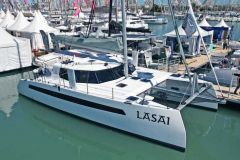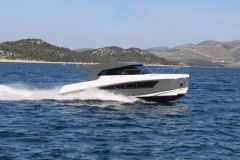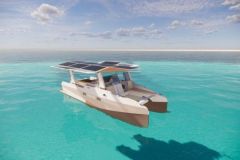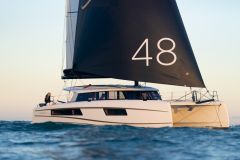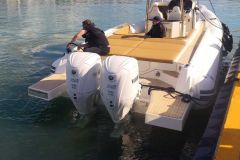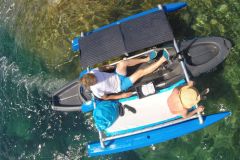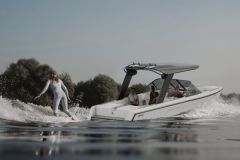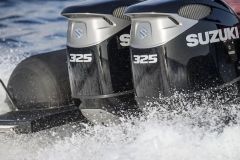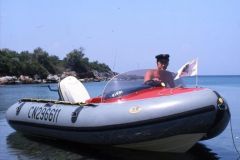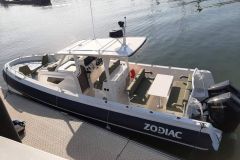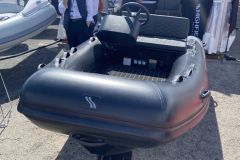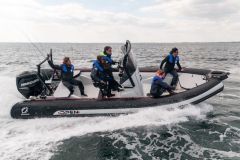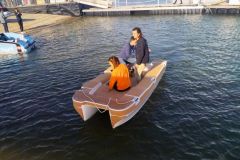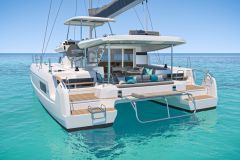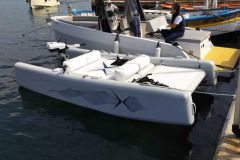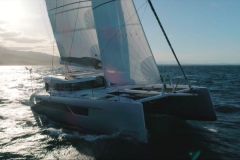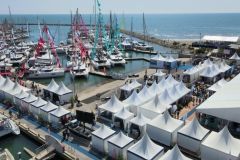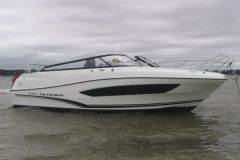A support for the small America's Cup
The Mer Agitée catamaran project was born at the time of a project for French participation in the America's Cup. This event, a laboratory for the development of sailing, which saw the beginnings of today's flying multihulls, was held in Falmouth, England. Michel Desjoyeaux explains: "We needed a platform to be able to transport the boat for the small Cup on the other side of the Channel. The small catamaran was lifted between the two hulls of the platform, and once on the other side, the catamaran Mer Agitée was used as a support to live on board with the team. The project unfortunately stopped, but we continued to develop the boat, in particular for race monitoring. It was commissioned in 2017."
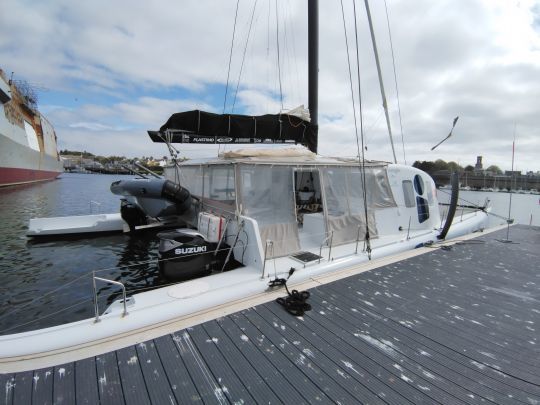
Reuse of racing boats
The specifications of the catamaran were to be light to be fast and consume little. It is therefore built like a racing boat, in carbon, for a final displacement of only 8 tons for 18.28 meters long and only 90 centimeters of hull draft. It uses a maximum of re-use, as Michel Desjoyeaux explains: "The floats are from Gitana 10, the mast is Foncia 2010, the beams are a failed Volvo mast, the rudders are also from Foncia. The winches and sheets are also salvaged, and the sails are from Macif."
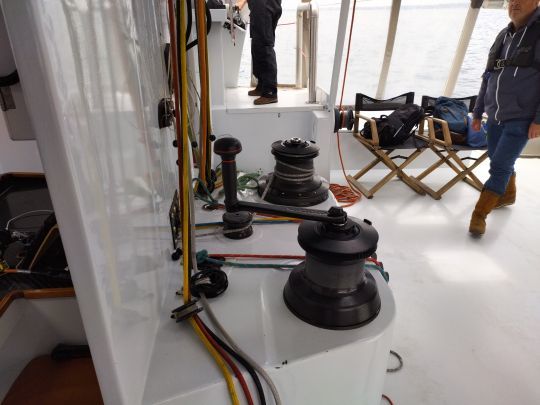
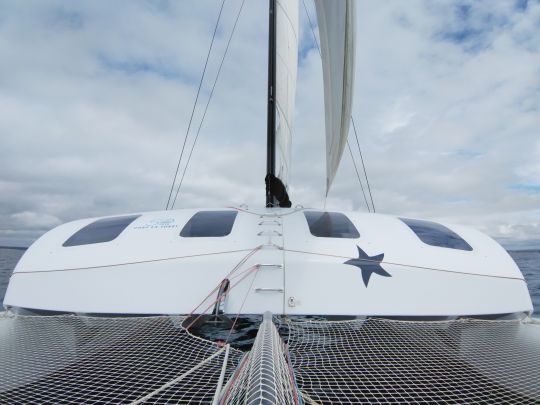
Sailing as well as motoring
We embark in Concarneau for a sea tour with Michel Desjoyeaux on board the catamaran. Equipped with 2 Suzuki outboard engines, partner of the project, the sailboat is easy to maneuver to leave the quay. With 2 times 300 horsepower coupled with double propellers, the catamaran combines maneuverability and speed. We quickly noticed it by taking the helm and the throttle. The acceleration is frank, and with only 8 tons to launch, the maximum speed is quickly reached. If the boat does not glide, given the hulls of the floats, it keeps an almost zero trim, which can be corrected with the foils, which also serve to dampen the effects of the chop.

The maximum engine speed is 28 knots, but it is generally operated at around 20 knots at cruising speed. At 15 knots, it consumes 3.9 liters per mile. With its 2x500 liters of fuel, the Mer Agitée catamaran has 5 hours of autonomy at maximum speed and 50 hours at 10 knots.
But as the skipper reminds us: "The engine is not the main mode of propulsion. We have to do 20 minutes of motor for 2 hours of sailing. We had wanted to put inboard engines initially, but there was not enough room in the floats. We made the choice of outboard, which actually works very well for the catamaran, and allows us to pull it up out of the water with our rocking chair and trim, unlike a shaft line that can take a beating."
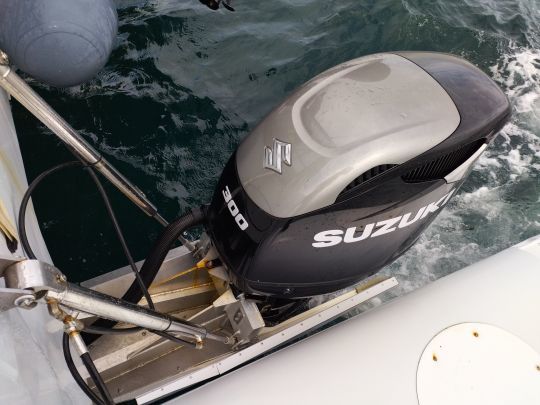
Indeed, we quickly set the sails, and even if the wind is moderate, we quickly reach the Glénan, the boat sailing almost at wind speed. Michel Desjoyeaux insists: "We're between 15 and 20 knots fast . We've peaked at 26 knots."
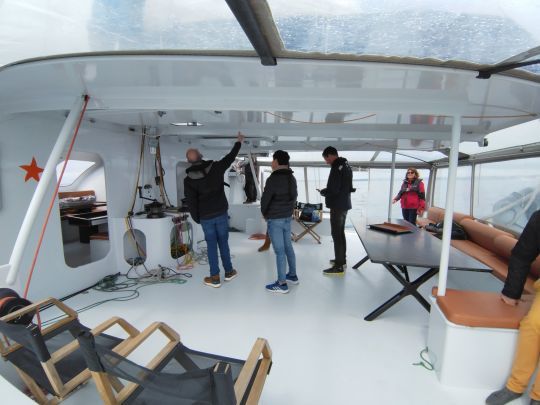
An efficient boat
Eating quietly in the large open cockpit, at more than 15 knots, without feeling the chop, we understand why the Mer Agitée catamaran is an attractive support for race starts and accompaniments. With a kitchen and two cabins, it easily accommodates the teams on board and is economical.
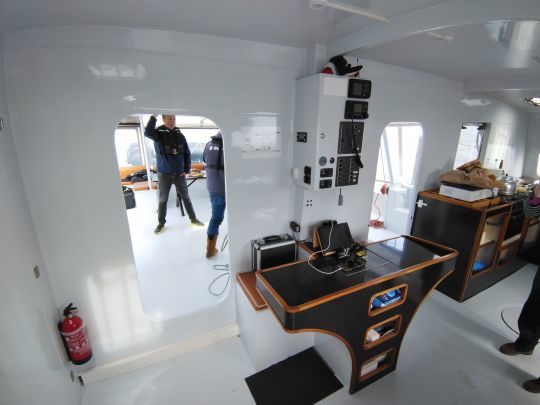
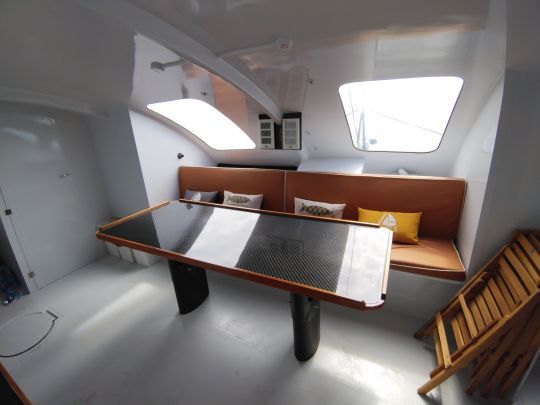
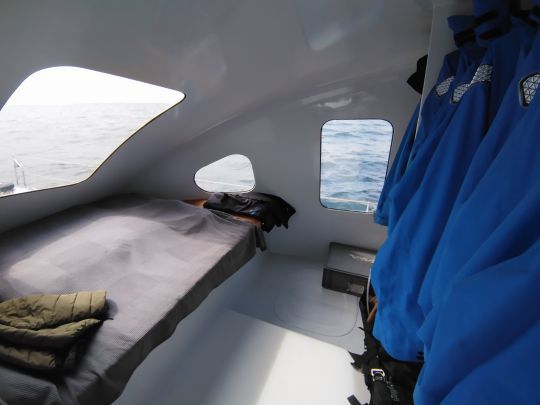
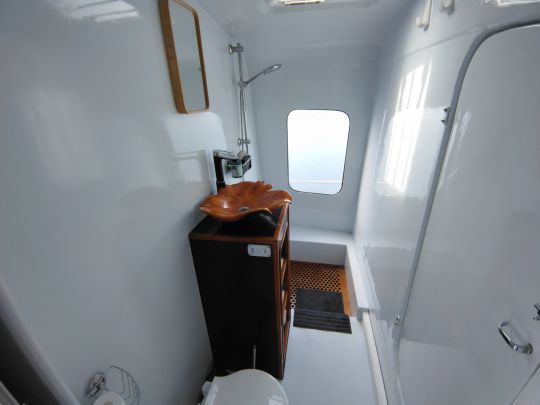
6,000 euros were saved in fuel on the round Britain race in one week in 2022, compared to conventional motor boats. If the exterior style is confusing, Michel Desjoyeaux concludes by quoting the most beautiful compliment heard on a pontoon: "It's very ugly your boat, but it looks very smart!"









